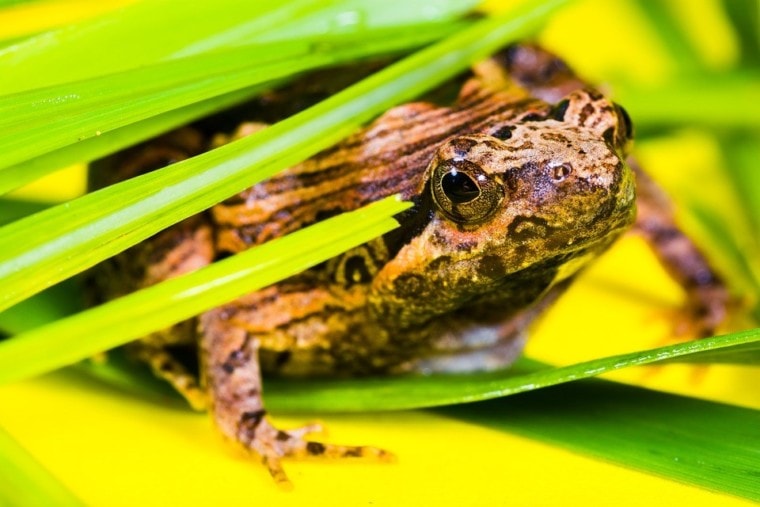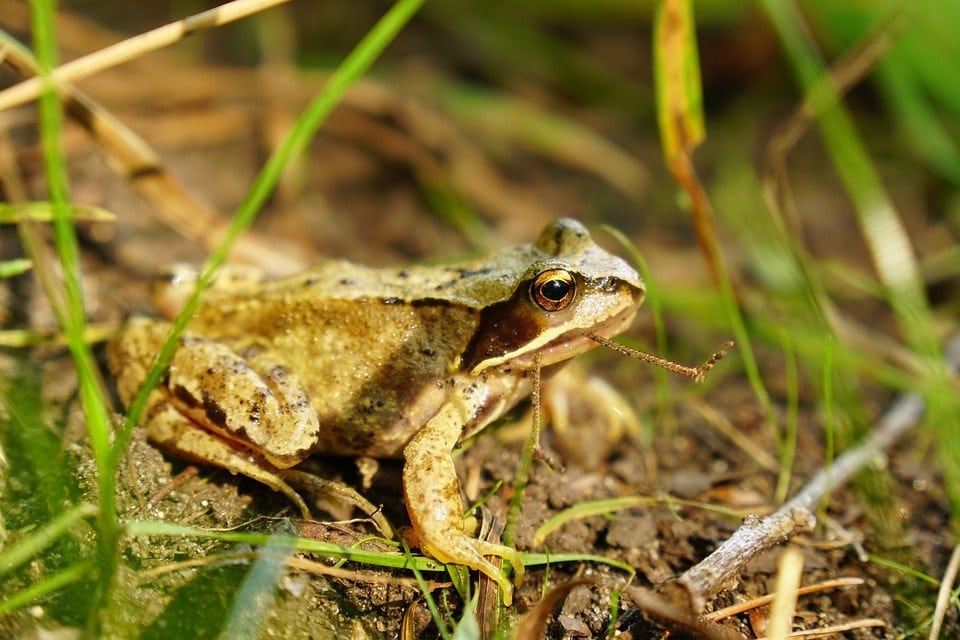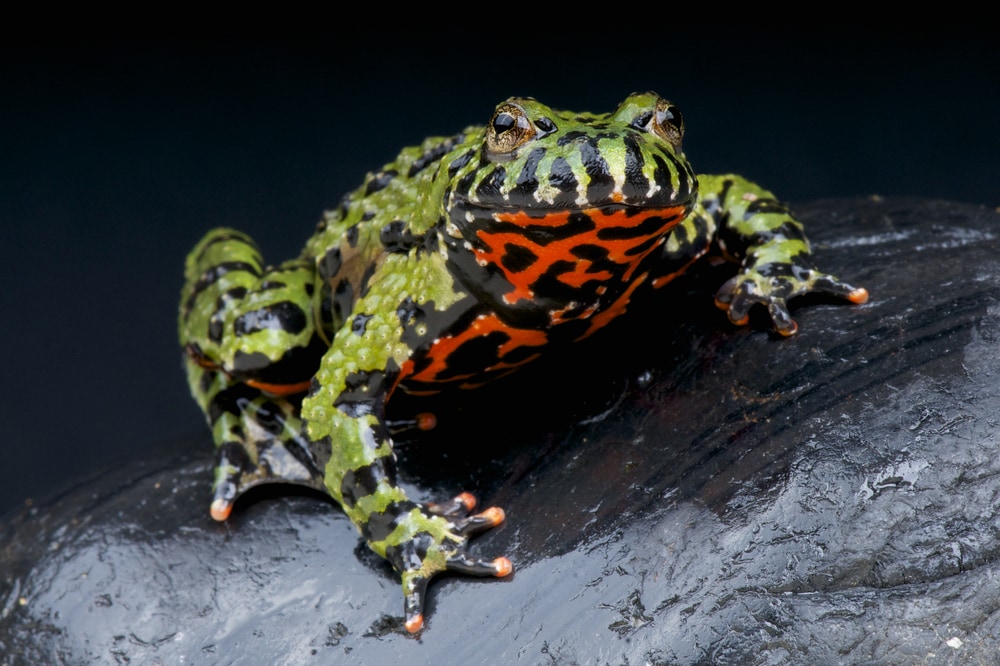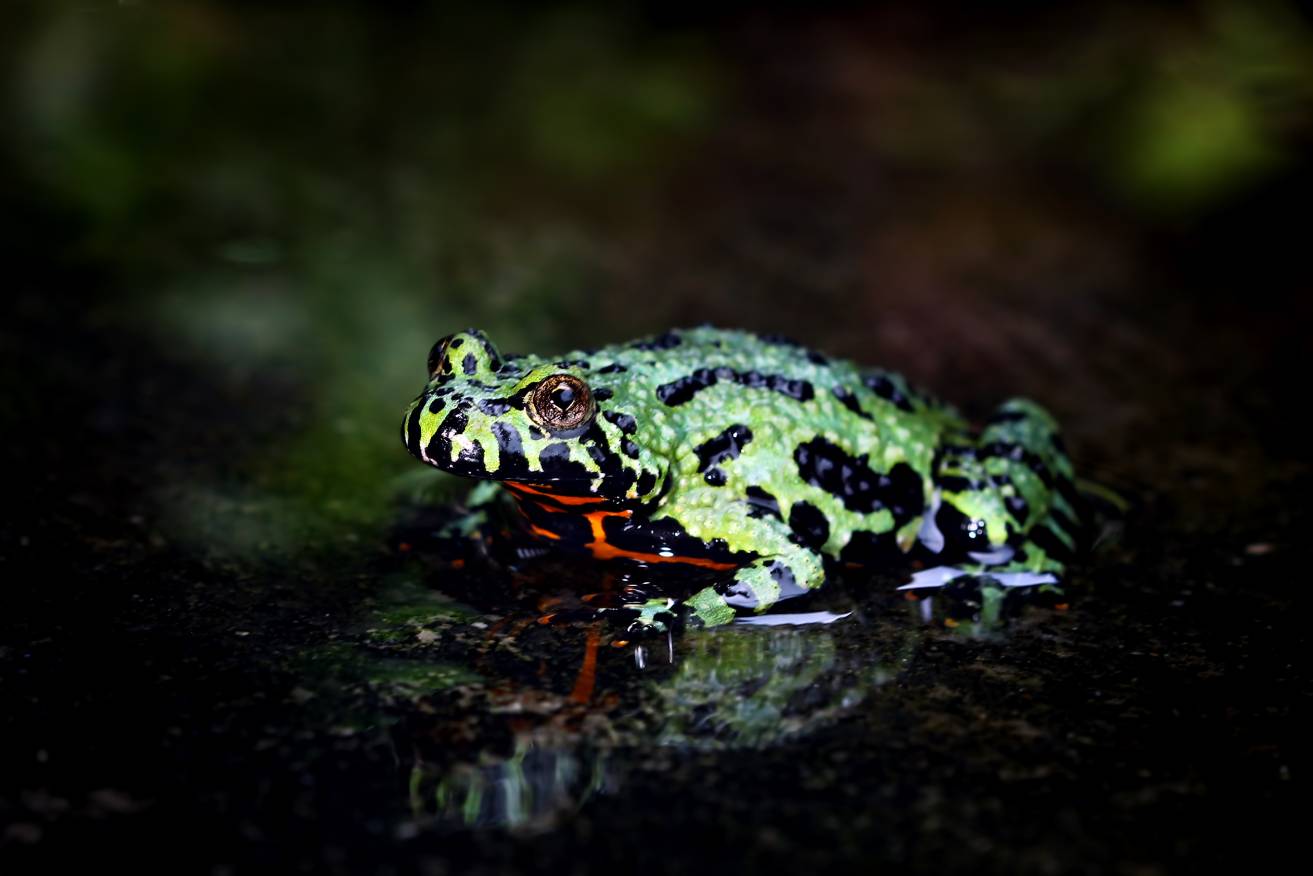
Frogs are one of the most commonly found amphibians on the planet and come in a massive variety of sizes and colors. Being amphibians, they are adapted to living in both terrestrial and aquatic environments and thus make interesting and popular pets to keep at home. Unfortunately, frogs are facing large declines in population due to human activities that impact their environment, as well as due to the ever-increasing pet trade, and you should only adopt frogs that are bred locally and avoid capturing or acquiring wild-caught frogs.
Frogs, both in the wild and as pets, are largely carnivorous and eat a wide variety of insects that are naturally found in their local habitat. As such, when kept as pets, they should have a diet as close as possible to their natural preferences.
In this article, we’ll take a look at the diet of frogs in the wild, as well as what to feed them should you decide to keep one as a pet.
What Do Frogs Eat in the Wild?
Frogs are largely carnivorous animals that eat invertebrates that are easily available in their natural habitat. The size of the frog will typically determine what foods they are capable of eating, and small frogs will mostly feed on small insects, while particularly large frogs, such as the American bullfrog, can eat small animals, such as mice, birds, and even other frogs. Frogs are opportunistic eaters, and basically, whatever moves and can fit inside the frog’s mouth is worthy of being their next meal!
It’s important to note that frogs will not eat dead insects or animals. As pets, this is an important point, as frozen crickets or mealworms are not suitable for pet frogs — they need live food.
Depending on their size and environment, the following is a list of foods commonly eaten by frogs in the wild:

What Do Frogs Eat as Pets?
Please note that many states and jurisdictions may have legislation that prevents capturing or owning tadpoles, frogs, or toads. Always make sure you have permission to legally own an exotic pet before deciding to adopt one. If you are in the US, please refer to state laws before deciding to adopt an exotic or wild pet. Elsewhere, please refer to the relevant laws where you reside.
Capturing wild animals is not advised, as this disrupts local ecosystems. In addition, amphibians may naturally harbor Salmonella and spread it to humans and other pets. Frogs or toads are not recommended to be kept alongside children, the elderly, pregnant individuals, or those with a compromised immune system. Hygiene is of utmost importance when dealing with amphibians.
Some species of frogs have naturally occurring poisons or toxins that they can release by different mechanisms, depending on the species. All toads are toxic to a certain degree, and they are especially dangerous for pet dogs. Therefore, caution and thorough research prior to adopting a pet is very important.
Wild frogs eat food that is a natural part of their immediate environment, so you, as their caregiver, need to recreate that environment. It is vital that you give your pet frog a diet that replicates their diet in the wild as closely as possible.
Luckily, because frogs are omnivorous, opportunistic eaters, feeding them is relatively easy, and most pet stores will carry the right food. Their diet consists mostly of protein from insects and other invertebrates, but each particular species of frog will have their own nutritional requirements. In general, though, a mix of the following is ideal:
Most of the above foods are available at pet stores, usually for pets like fish or snakes, but they are perfect for frogs too. Crickets and mealworms are easy to raise at home, and if you have more than one frog, it will save you a great deal of money to raise them yourself. Also, you can go for a walk around your garden regularly and find worms, caterpillars, or other bugs to feed your frog as a welcome treat!
Gut Loading
In the wild, frogs eat a wide variety of foods, and as such, their nutritional requirements are usually adequately met. When kept as pets, there are fewer options, so you need to carefully make sure your frog is getting all the vitamins and nutrients that they need.
One way of doing this is by “gut-loading.” Many of the insects sold in pet stores are bred fast and in massive amounts, and as such, they may be lacking in quality nutrition. You can remedy this by feeding them nutritious foods for 24-48 hours before feeding them to your frogs, thereby loading them with nutrition that will then be passed to your frogs.
Another common method of ensuring that your frog is getting all that they need is adding vitamin and mineral supplements to their diet. You can easily buy these supplements and then dust them onto your frog’s food.

How Often Should You Feed Your Pet Frog?
The exact amount and feeding schedule depend entirely on the age and species of your frog. Younger, high-energy frogs will need more frequent feeding than older, more docile frogs, sometimes up to 2-3 times a day, whereas larger and older frogs only need to be fed every other day. Around 5 dusted crickets per meal is a good average for small frogs, but they can get overweight, so be careful not to overfeed them. A good way to gauge is by feeding them 3 or 4 insects, and if they’ve eaten them all relatively quickly, add another to the next meal. As soon as you notice any leftover, then lower the amount accordingly.
Large frogs only need a meal around once a week, depending on their age, although large frogs are not really suitable as pets.
- Related Read: What Do Tadpoles Eat in the Wild and as Pets?
Summary
Frogs need to eat a wide variety of foods to stay healthy. In the wild, they’ll eat almost anything that can fit in their mouth, and it is this adaptability that has made them such a prolific species. You should aim to give your pet frog as much of the same variety as possible to ensure that they get all the vitamins and nutrients that they need.
For more on reptiles as pets, check out these helpful posts:
- 10 Best Pet Reptiles for Beginners (With Pictures)
- How Much Does It Cost to Own a Pet Snake?
- 21 Best Pet Lizards for Beginners (With Pictures)
Featured Image Credit: Pixabay









